Go beyond the scoreboard
Get the latest on L.A.'s teams in the daily Sports Report newsletter.
You may occasionally receive promotional content from the Los Angeles Times.
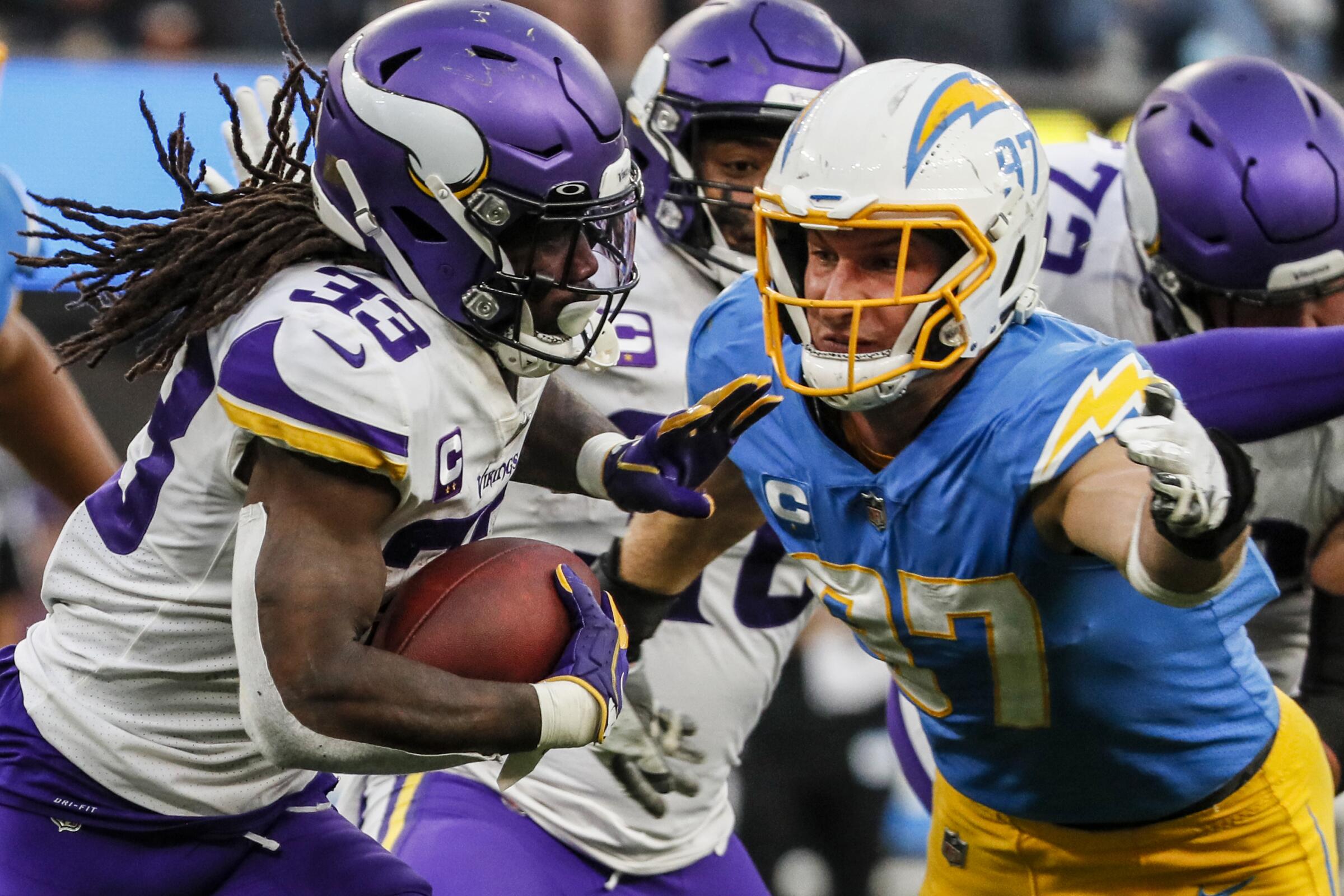
The Chargers lost for the third time in four games Sunday, falling 27-20 to Minnesota at SoFi Stadium.
They are 5-4 and tied with Las Vegas for second place in the AFC West behind Kansas City (6-4).
Here are five takeaways from their latest defeat:
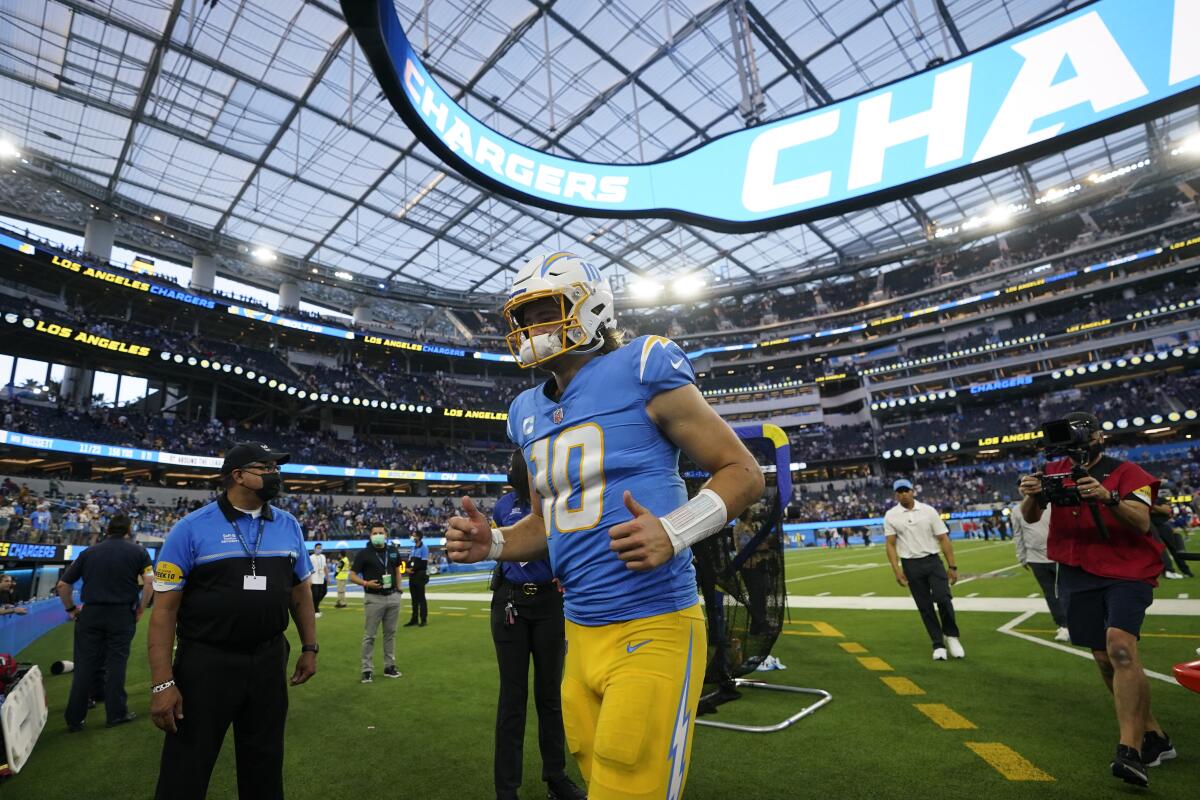
On a day when the offense again struggled to sustain anything of consequence, the Chargers produced what turned out to be an oddly dominant touchdown drive to open the second half.
They went 75 yards in 10 plays and scored when Justin Herbert hit Austin Ekeler for a two-yard touchdown.
“I love that drive coming out of halftime,” coach Brandon Staley said. “We were aggressive … running the ball, throwing the football, staying ahead of it. Our guys were executing at a high level. I felt like our pace was good.”
Asked if he was surprised then that the Chargers were unable to repeat the performance the rest of the day, Staley said, “I was a little surprised.”
Herbert was five of seven for 62 yards on the possession. His scoring dart to Ekeler was threaded through a slim opening between Vikings linebackers Nick Vigil and Eric Kendricks.
The Chargers moved with purpose and picked up five first downs. Over the remainder of the game, they’d manage only four more first downs.
Their other touchdown drive Sunday also covered 75 yards but was aided by 33 yards of Minnesota penalties.
Coming off a very efficient and productive game in Philadelphia, the Chargers finished with 253 total yards and averaged 4.6 per play. The Vikings have the NFL’s 23rd-ranked defense through 10 weeks.
The Rams produced many headlines with their recent acquisitions. Meanwhile, L.A.’s other team, the Chargers, could not produce a home win and fell out of first in the AFC West.
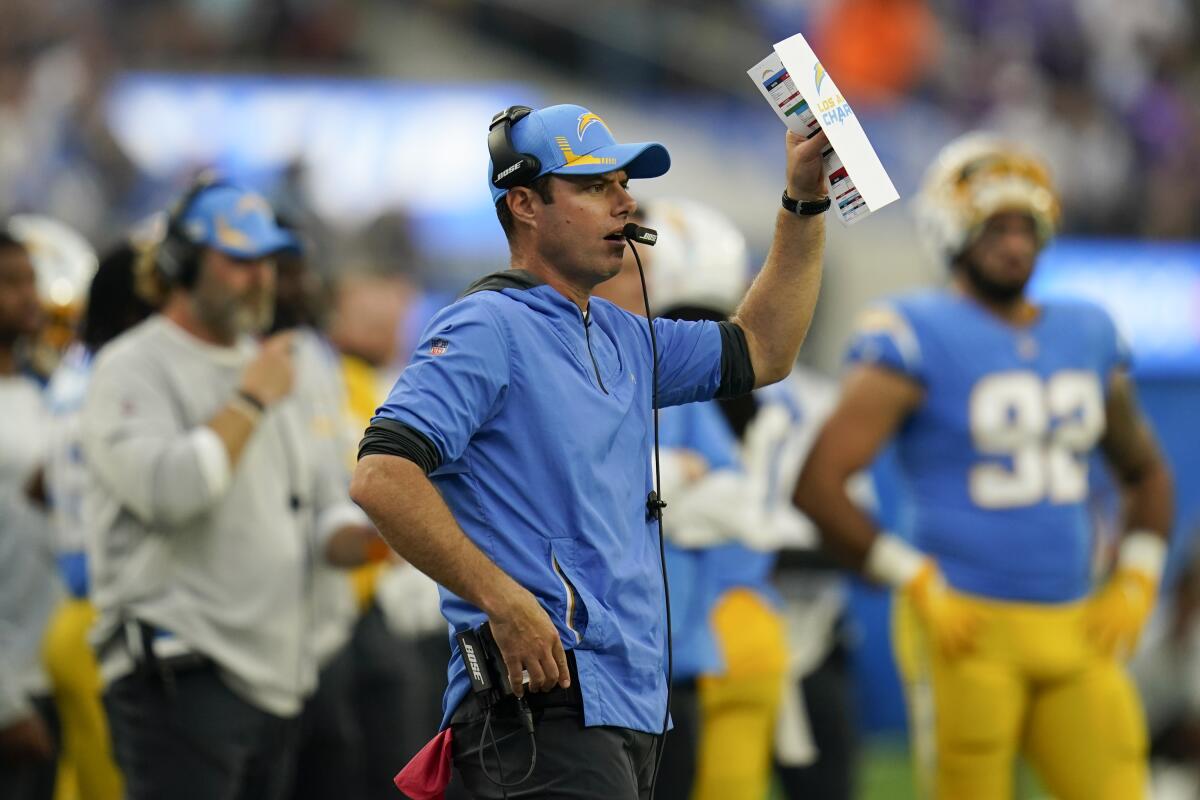
Staley gained fame early this season for his willingness to be aggressive on fourth down.
Against Minnesota, the Chargers didn’t attempt to convert any such situations and even kicked a field goal late when some models strongly suggested going for it.
Facing fourth and two at the Vikings’ six-yard line, the Chargers trailed 27-17 with a little more than five minutes remaining. Staley opted to send in Dustin Hopkins, who booted a 24-yard field goal.
The Chargers still had two timeouts and the two-minute warning. Staley explained he valued “the certainty of the points” and wanted to “give ourselves a chance” by closing within one score.
“I just felt like, with that circumstance, it was the right thing to do, to truly make it a one-possession game,” he said. “I just felt like the certainty of the points was too good to pass up.”
The decision didn’t work out when the Chargers’ defense was unable to stop the Vikings, who ate up the final 4:36.
The Chargers could not make the key catch or defensive stop in the final minutes of a 27-20 loss to the Minnesota Vikings at SoFi Stadium.
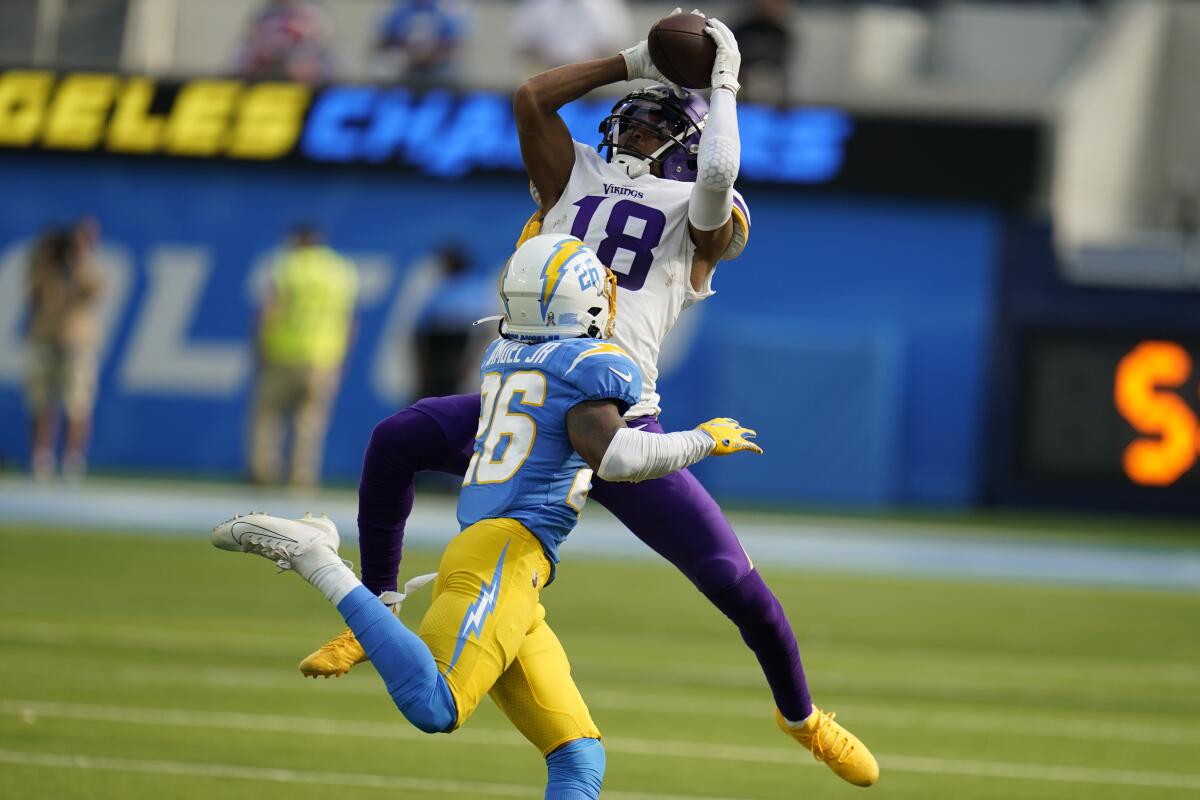
Cornerback Asante Samuel Jr. returned after missing one game because of a concussion.
The rookie played well, including one pass breakup. He also recovered impressively to catch Justin Jefferson and force an incompletion on a first-quarter play that was nullified by a penalty.
Samuel said the concussion was the first of his career.
“I just wanted to make sure I was 100% healthy before I came back and not rush it because the brain is something that you can’t play with,” he said.
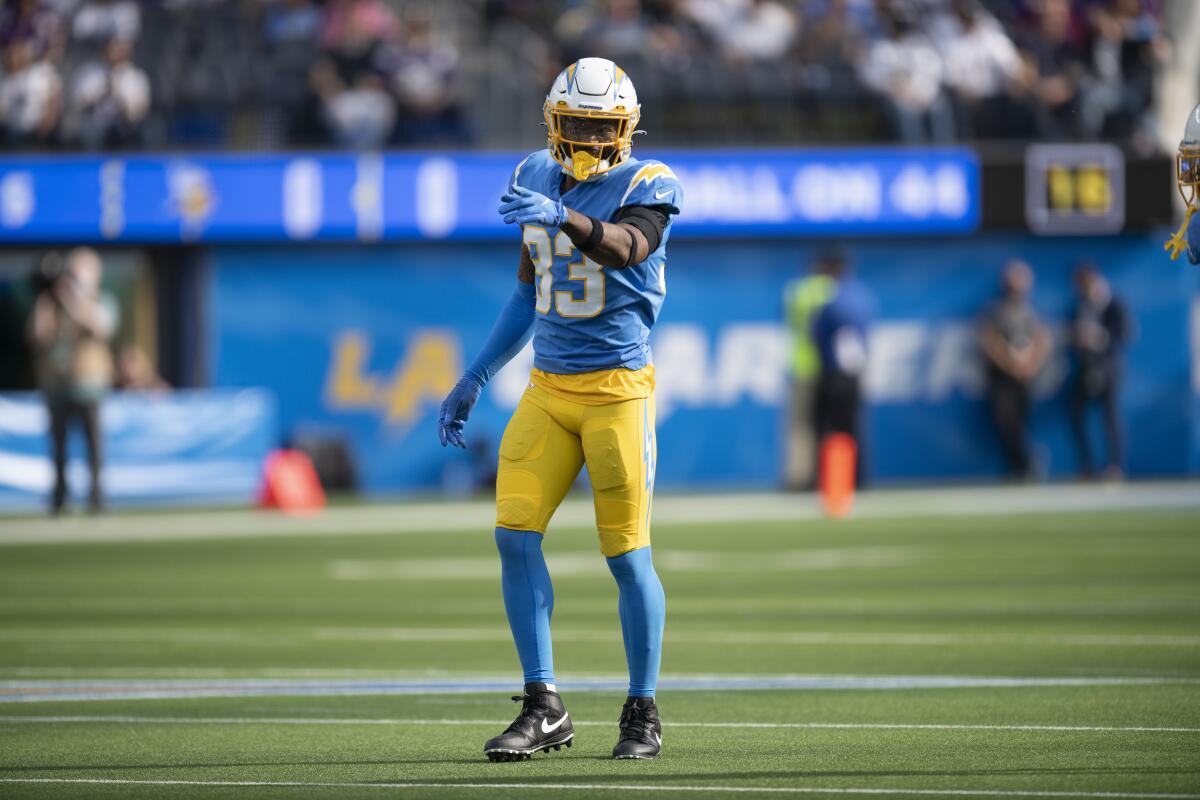
The Chargers had issues, especially in the second half, with their defensive communication system. Staley said the headset in Derwin James’ helmet kept malfunctioning.
At one point, Staley was forced to signal in the defensive calls. Then linebacker Kyzir White switched helmets and began “quarterbacking” the huddle.
“There was like a big stretch in the middle where my communication to the defensive signal-caller wasn’t good,” Staley said. “We had to swap them out. We had to have this wholesale change. They couldn’t hear me. I couldn’t hear them.”
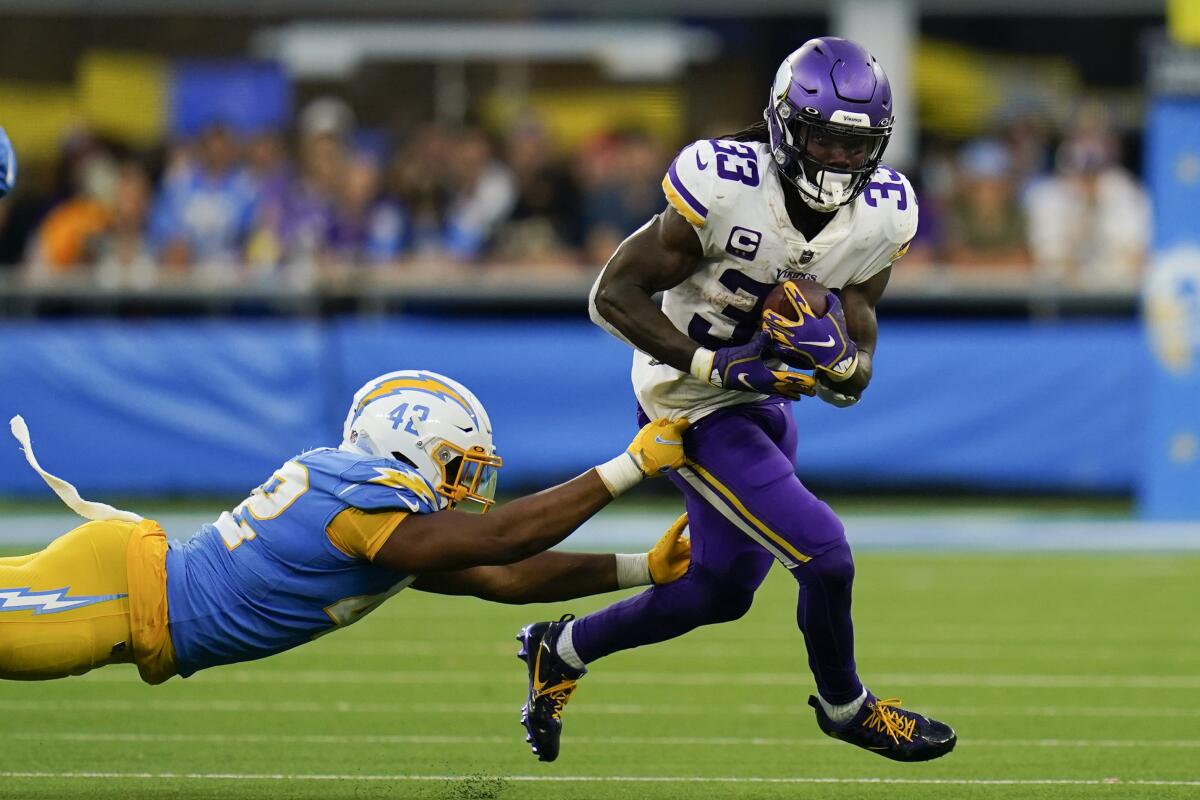
The Chargers’ rush defense — ranked last in the NFL — held up decently against Dalvin Cook. The Minnesota running back finished with 94 yards on 24 carries but didn’t wreck the game. His long run was 12 yards.
The Vikings finished with 103 yards on 33 attempts, an average of only 3.1 per carry. The Chargers had three tackles for loss versus the run.
“I thought our guys competed today at a high level against a really good running attack,” Staley said. “I really feel like we’ve settled into how we want to play and who we want to play with.”
The Chargers still are giving up an average of 155.1 yards on the ground. That’s almost 20 more than 31st-ranked Houston.
Staley said since the team’s week off (Week 7), the defense has been playing with more purpose and physicality against the run.
“We’re tackling well,” he said. “We’re setting better edges. We’re playing with more penetration up front. Our second and third levels are a lot more sure of where to fit because of it. I think we’ve made a lot of improvement over the last three games.”
Go beyond the scoreboard
Get the latest on L.A.'s teams in the daily Sports Report newsletter.
You may occasionally receive promotional content from the Los Angeles Times.